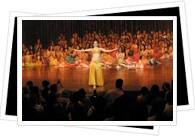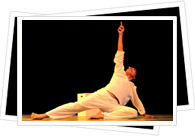The end of the last century was one of the lowest points for the theatre in Ecuador.
In the 1980's, many Ecuador theatre companies started to lose their financial assistance, both public and private.
The following decade, further cutbacks meant that many theatre companies had to make immense cutbacks to their productions and in many cases, ceased working.

The history of Ecuador theatre dates back to the indigenous people who used the art to pass down traditional stories to younger generations
As part of their festivals, for example at harvest time, the aboriginals of Ecuador would enact stories and folk dances. Many country people of rural Ecuador still perform similar pieces.
Many early pieces were the Spanish explaining the work of the devil and how the virgin Mary would save them, so that the natives would understand religion of Christianity. The colonial period had very little theatre outside of these religious education pieces as the ruling classes at the time considered theatre to be dangerous in light of the socio economic conditions.
In Ecuador, theatre has been performed in Guayaquil since at least the 1550's with town records describing how pieces were acted out in the town square. In the first half of the 18th century, entremés and loas were performed in manor houses, churches and town plazas. A large proportion of these early texts were lost.

The first of Ecuador's theatres is believed to be that which was built in Guayaquil at some point between 1770 and 1780, although town records show that many pieces were acted out in the town bakery. Records of theatre being produced in capital city, Quito, exist in the 1820's with performances made by San Fernando University students, although there was no physical theatre to perform in.
Comedies were the most common Ecuador theatre pieces throughout most of the 19th century, with farces, dialogues and sketches which had all been popular the previous century too. This developed to romances which remained popular into the 20th century.
The first half of the 1900's saw both philosophical and poetic pieces focussing on the emotional and psychological issues which affect people as well as theatre reflecting social development and the struggles of social inequality. After this time interest in the Ecuador theatre waned as cinema took over audiences enthusiasm.
The turn of the 21st century has seen many of Ecuador's theatres reconstructed and renovated, renewing interest in the art. Ecuador's theatres see variety shows, ballet, opera and concerts as well as traditional zarzuelas and theatre from around the world.
Some of the noteworthy theatres in Ecuador are the Bolivar Theatre, which is the only theatre that theatre constructors Hoffman and Henon designed outside of the United States. Commissioned by Ecuador's rich Mantilla brothers, it is of architecture style neoclassic with notable Moorish influence and was inaugurated in April 1933.
Other Ecuadorian theatres are the Patio de Comedias (comedy theatre), Prometeo Theatre, Malayerba Theatre and the Teatro Sucre.